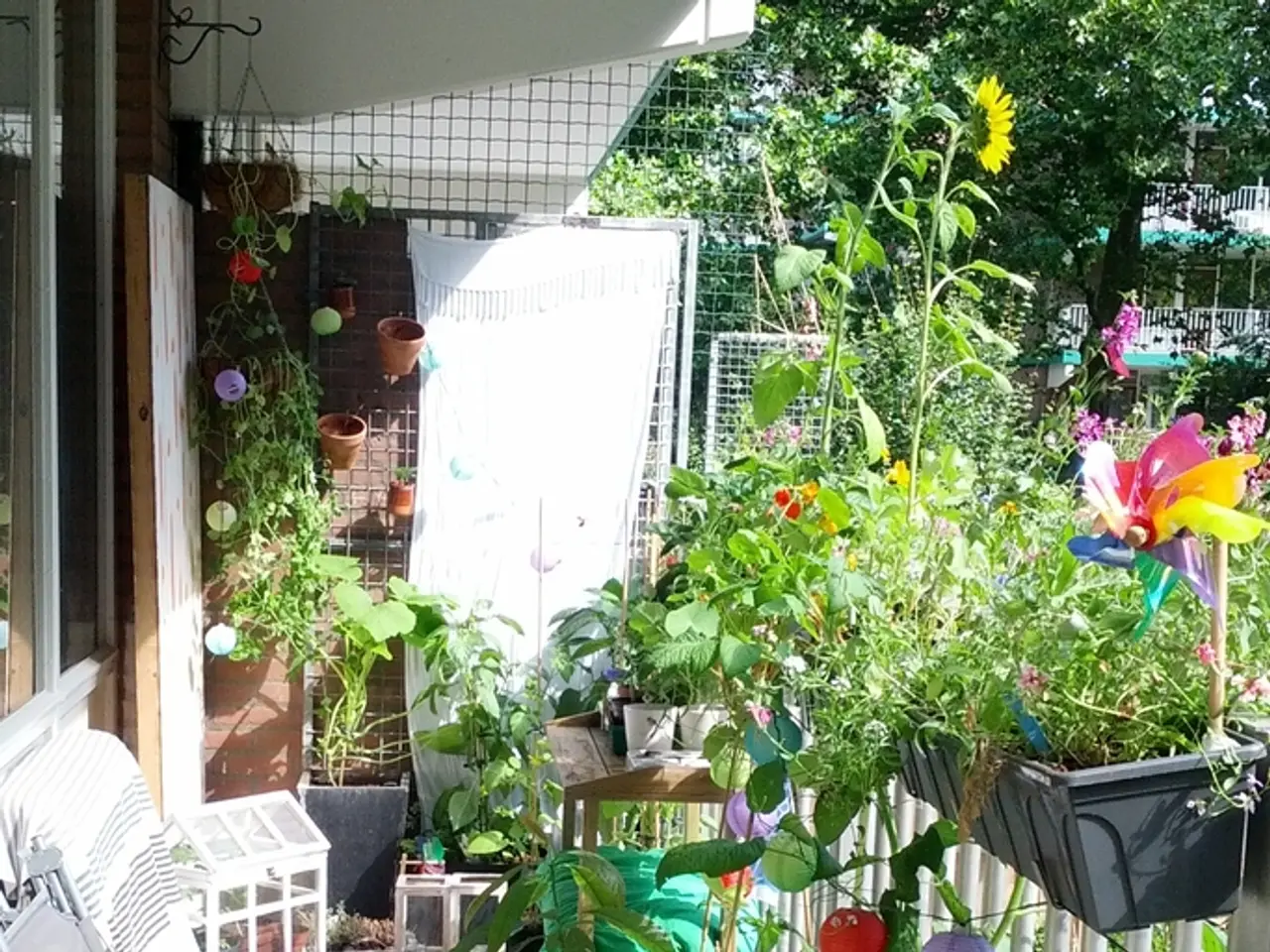"300-Year-Old Farmhouse Reestablished by Artist Jobe Burns Oozes Power and Genius, History Palpable Throughout"
Transforming a 300-Year-Old Farmhouse: A Journey of Preserving History and Embracing Modernity
In the heart of London, artist, designer, and creative director Jobe Burns has breathed new life into a 300-year-old farmhouse, skillfully blending history and modernity in a harmonious fusion.
The farmhouse, once lost in the passage of time, has been meticulously restored to regain its original charm. Jobe's design philosophy centers on preserving the authentic historical character of the home while integrating modern design elements, ensuring a genuine and harmonious coexistence of the building's rich past and contemporary aesthetics.
The house embraces airy textures, neutral tones, and warm wooden elements, creating a sense of stillness, peace, and comfort. The living room, for instance, features an interior window with an arched framing and period style glass, a modern living room furniture that adds a sense of separation, and color-drenched rooms in bold red and natural woods.
In the red bathroom, Jobe's favorite room in the project, a large ceramic bath, clay walls, soft shapes, and a curved shower create a cocoon-like environment, designed to feel like a spa for relaxation. The dining room, on the other hand, is spruced up with a walnut frame and maple hues dining chair, while the kitchen island serves as a bold centerpiece with a ceramic vase made of high-quality Portuguese clay.
The design approach was to let the building take the lead, avoiding smart technology and keeping everything manual. Even the new brickwork was mixed with eleven different shades of mortar before landing on the right one, ensuring the new parts spoke the same language as the old. Handmade 2" bricks from a demolished farmhouse were sourced for extending the house, and everything in the renovated house, from custom-made furniture to plaster-sculpted skirting and stained glass, was made or adapted by hand.
Jobe Burns believes that when renovating a 300-year-old home, a quick-fix mindset should be avoided. Instead, he spent more than four years carefully restoring the farmhouse, reviving original architectural features like oak doors and a staircase, and meticulously working on details by hand, such as lifting, relaying, and polishing every floorboard. The goal was not to erase or overshadow the farmhouse's story but to softly bring it into the present while keeping the "bones" of the home intact.
The house's beauty lies in its delicate touches of decor, creating unforgettable spaces for solitude, music, and gathering. A tomato vine ceramic candle from Anthropologie can bring in fruity summer candle scents, while an amber glass chandelier from Dusk Lights can brighten up the living room lighting ideas. The living room also features an interior window with an arched framing and period style glass, a modern living room furniture that adds a sense of separation.
In summary, Jobe Burns embraces a human-centered, history-led design philosophy that balances contemporary aesthetics with meticulous preservation, highlighting a spatial narrative that honors time and craftsmanship. His approach is deliberate and slow, allowing for a poetic integration of modernity without losing the patina of history that gives the home its character. The farmhouse, after years of use, has lost its original charm, and Jobe's goal was to bring back its unique character, creating a home full of life, allure, and unbeatable appeal after graduating.
[1] Burns, Jobe. (2021). Jobe Burns: A 300-year-old farmhouse transformed into a modern space. [Interview]. Retrieved from www.designboom.com/architecture/jobe-burns-300-year-old-farmhouse-transformation-1338484/
[3] Burns, Jobe. (2021). The 300-year-old farmhouse: A labour of love. [Blog post]. Retrieved from www.jobeburns.com/blog/the-300-year-old-farmhouse-a-labour-of-love
- The subtle decor details in the farmhouse, like the tomato vine ceramic candle from Anthropologie, add unforgettable touches to spaces for solitude.
- The farmhouse's kitchen island, featuring a ceramic vase made of high-quality Portuguese clay, serves as a bold centerpiece.
- Jobe Burns' design philosophy for the farmhouse focused on preserving the historical character of the home and integrating modern design elements, such as in the dining room with walnut frame and maple hues dining chair.
- In the interior design of the red bathroom, Jobe created a spa-like environment with large ceramic bath, clay walls, and a curved shower for relaxation.
- Jobe Burns spent more than four years carefully restoring the farmhouse, meticulously working on details by hand, like lifting, relaying, and polishing every floorboard.
- The farmhouse, once lost in the passage of time, has been beautifully transformed into a modern space with handmade 2" bricks from a demolished farmhouse and custom-made furniture.
- The living room in the farmhouse features an interior window with an arched framing and period style glass, modern living room furniture that adds a sense of separation, and bold red and natural wood tones.






